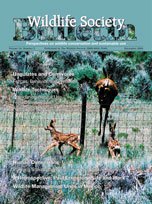Animal diet investigations typically have been limited to stomach-content analysis, fecal analysis, or direct observation of foraging behavior. More recently researchers have used stable isotopes in tissues that develop during different time periods to examine the assimilated diet of mammals. Hair and bone tissues are used to examine annual and lifetime assimilated diets, whereas metabolically active tissues (e.g., blood, muscle, liver) reflect the assimilated diet over a period of days or months. Using hair tissue to examine assimilated diet at a finer temporal scale would be advantageous because samples can be collected without sacrifice or direct and continuous handling of an animal. We examined the possibility of using hair tissue to distinguish among seasonal assimilated diets of grizzly bears (Ursus arctos) by comparing the isotopic values of whole guardhair (annual assimilated diet), underfur (autumn assimilated diet), and replicate sections of guardhair for individuals within plateau and mountain environments in central British Columbia, Canada. Stable carbon (δ13C) and nitrogen (δ15N) values differed between whole guardhair and underfur for male and female grizzly bears in the mountains and for δ15N for female plateau bears. Consistent with our assumptions, isotopic values (δ15N and δ13C) for the section of guardhair nearest the root overlapped with the underfur isotopic values for 7 of 8 bears. Overlap with subsequent sections was highly variable. Variation among replicates of guardhair sections within bears exceeded variation because of analytical error, indicating that current assumptions about hair growth may not be correct. The need to composite sample hair sections to meet minimum weight requirements precluded an examination of variation in isotopic values among individual hairs. Researchers examining the diets of grizzly bears should consider that differences can be detected between annual (whole guardhair) and autumn (underfur) assimilated diets, and there is potential to use sectioned guardhair to examine assimilated diet at a finer temporal scale; however, we suggest that controlled studies quantifying variation in hair tissue for bears on a constant diet and testing hair growth assumptions are integral to interpreting the temporal variation in assimilated diet using hair tissue.
How to translate text using browser tools
1 December 2006
Temporal Variation in Stable Carbon and Nitrogen Isotopes of Grizzly Bear Guardhair and Underfur
ELENA S. JONES,
DOUGLAS C. HEARD,
MICHAEL P. GILLINGHAM
ACCESS THE FULL ARTICLE
It is not available for individual sale.
This article is only available to subscribers.
It is not available for individual sale.
It is not available for individual sale.

Wildlife Society Bulletin
Vol. 34 • No. 5
December 2006
Vol. 34 • No. 5
December 2006




